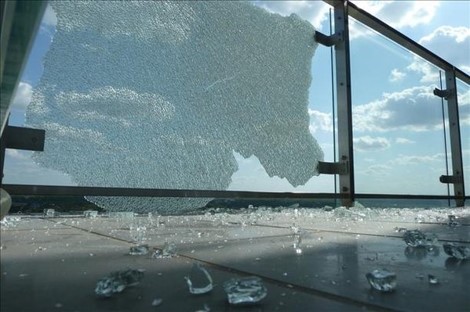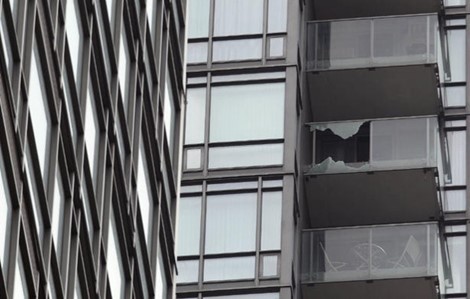2015 IBC Requirements for Laminated Tempered Glass
A major change went into effect for the 2015 International Building Codes (IBC). Glass railing applications may no longer use monolithic tempered glass as a glass balustrade or as infill. There are exceptions, but they are limited to areas where there is no walking area below the glass railing.
This was a reaction to several instances where monolithic glass railings were breaking across North America. The primary causes were nickel-sulfide inclusions or unprotected edges.
Nickel-sulfide inclusions are imperfections in flat glass that, if undetected, will expand and cause the glass to break spontaneously. While domestic glass has a lower risk of these imperfections, the cases of failure were traced to glass that had been produced offshore but tempered in the U.S.
Monolithic tempered glass is also subject to breakage by impact on its edges. Glass edges of tempered glass are inherently weaker than the bulk of the glass and the panels may break from debris from above.
The W Hotel in Austin was a major incident in 2011. Here’s a quick article.
In a relatively brief period between 2010 and 2013, several cities had glass failure incidents which resulted in a proposal to the IBC to require laminated, tempered glass in all glass railing installations. While initially disapproved by the IBC Means of Egress Committee, there was a call for a floor vote at the final meeting of the 2015 code cycle. A 2/3 majority vote was required to overrule the committee and the vote was successful and the requirement is now part of the 2015 IBC.


Exception: A top rail shall not be required when the glass balusters are laminated glass with two or more glass plies of equal thickness and the same glass type when approved by the building official.
Be aware that there are different laminated glass options. Contact Wagner for all your glass-related questions or concerns.
